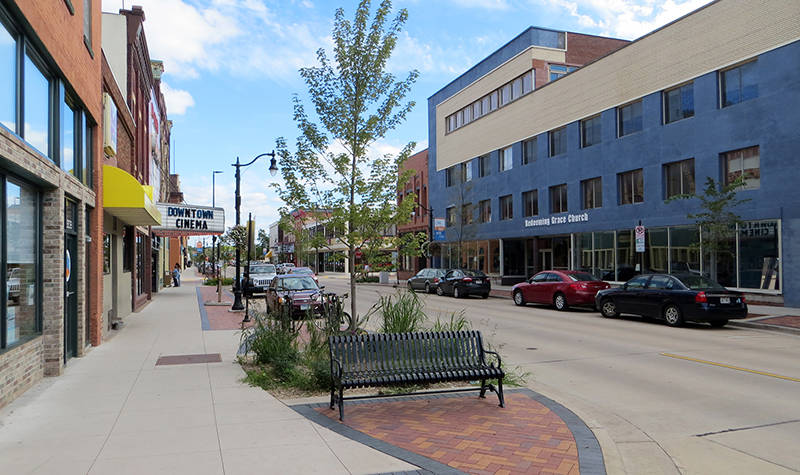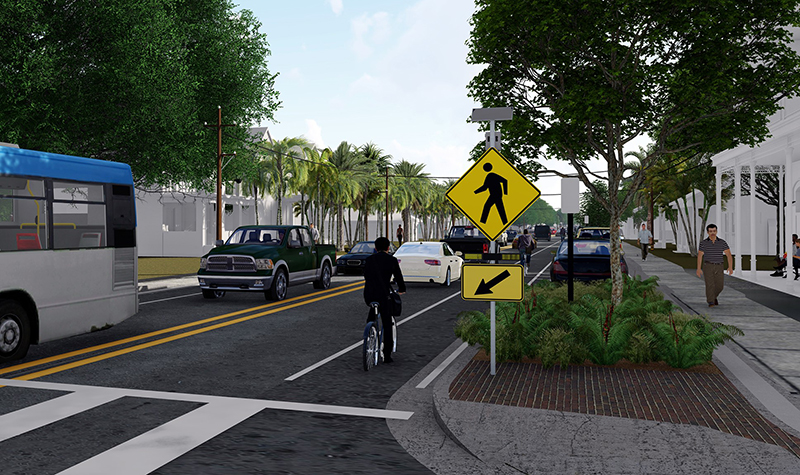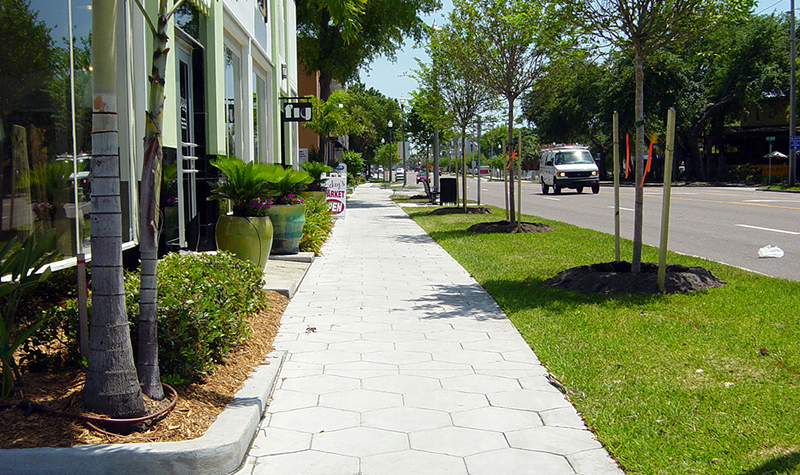Well-designed Sidewalks Keep Pedestrians, Communities on the Move
Safe sidewalks are essential. They keep pedestrians connected to their communities for work and recreation, and economies thrive when well-designed sidewalks can keep all that foot traffic moving.
Why build sidewalks? Here are a few reasons:
- Sidewalks help keep pedestrians and motorists separated and safe. The Federal Highway Administration (FHWA) notes that 6,700 pedestrians were killed in traffic crashes with motor vehicles in 2020 alone.
- Sidewalks enhance mobility for everyone – people using wheelchairs, parents with kids in strollers, people who need access to public transportation – everyone needs a safe way to get from Point A to Point B.
- Sidewalks promote wellness and social activity by providing a safe place to walk and making sure that space is wide enough for people to walk side by side.
- Sidewalks provide connectivity in a community, creating safe walkways from residential to commercial and public areas.

About the Expert:
Jeffrey Siewert, PE is the transportation group leader and senior project manager in the Tampa-Hidden River Parkway office in Florida. Complete Streets elements are part of many of his projects, including City of Tampa Walk-Bike FDOT Local Agency Program projects on Columbus Drive and 46th Street.
Not all sidewalks are created equal, however. We all have had the unpleasant experience of tripping over a cracked sidewalk or feeling less than safe because the sidewalk is too close to the roadway. Following are six basic elements for a safe, useful sidewalk.

1. Separation From Traffic
The Federal Highway Administration (FHWA) says that the wider the separation between the pedestrian and the road, the more comfortable the sidewalk is for the pedestrian. That buffer space also provides room for underground utilities, room for snow storage in northern climes, and room for aesthetic features, such as decorative lighting, planters, and other landscaping.
2. Safe and Sturdy Materials
A sidewalk should be constructed of a level (2% maximum cross slope – an Americans with Disabilities Act [ADA] requirement), hard, slip-resistant material – that’s generally concrete. Other less expensive materials can be used, such as asphalt or crushed stone, if they are properly maintained. Concrete is more expensive than asphalt, but it lasts longer and is easier to maintain. Pavers are nice due to their aesthetic value and ability to develop geometric graphics. However, they must be strategically placed on a well-prepared base to avoid settling.
3. Effective Drainage
Kids like to splash in puddles, but most adults like to keep their feet dry. If a sidewalk is waterlogged, pedestrians are more likely to walk in the street, which defeats the purpose of keeping pedestrians out of the roadway. Sidewalks should be well-drained. The ADA requirements for cross slope are more than adequate for drainage. But the runoff needs a place to go. If trapped by adjacent soils, sod, landscape, mulch, or tree roots, it will be unsafe and unpleasant to use. Designers need to ensure that runoff flows off!
4. Accessibility/Universal Design
The Public Right-of-Way Accessibility Guidelines (PROWAG) mandates that a sidewalk needs a minimum clear width of 48 inches. While that’s the minimum to allow a wheelchair user to pass along a sidewalk, the preferred width of an urban sidewalk is 5 to 6 feet. That’s enough to allow two people to walk side by side. The ADA provides guidelines on safe curb ramps and warning strips needed at the bottom of the curb ramps that can be detected by foot or by cane.
5. Proper Maintenance
A smooth sidewalk is safer for everyone. Sidewalks can be damaged by tree roots, heat buckling, and ground swelling. Adjacent landscaping also needs to be maintained so trees and bushes don’t block the sidewalk or obstruct visibility. Let your public works department know if a sidewalk has been damaged. And if you own a home adjacent to a sidewalk, keep an eye on your landscaping to make sure pedestrians can easily use the sidewalk.
6. Aesthetic Elements
A tree-lined sidewalk provides shade as well as aesthetic appeal. Street furniture such as benches and kiosks invite people to stop and enjoy the neighborhood. Street lighting improves visibility and security. All these elements turn a basic sidewalk into a destination.

Sidewalks are part of Complete Streets design, which considers the needs of pedestrians, bicyclists, and motorists when developing new or improved roadways. But drivers, too, need to play it safe. Some tips from the NHTSA:
- Look out for pedestrians everywhere, at all times.
- Use extra caution when driving in hard-to-see conditions, such as nighttime or bad weather.
- Slow down and be prepared to stop when turning or otherwise entering a crosswalk.
- Yield to pedestrians in crosswalks and stop well back from the crosswalk to give other vehicles an opportunity to see the crossing pedestrians so they can stop too.
- Never pass vehicles stopped at a crosswalk. There may be people crossing where you can’t see.
- Never drive under the influence of alcohol and/or drugs.
- Follow the speed limit, especially around people on the street, in school zones, and in neighborhoods where children are present.
- Be extra cautious when backing up and look for pedestrians.
Safety is the responsibility of everyone, and well-designed sidewalks play a crucial role in keeping people, communities, and economies on the move.
For more information on sidewalks and their role in Complete Street design, reach out to Jeffrey Siewert, PE.


Post a comment: